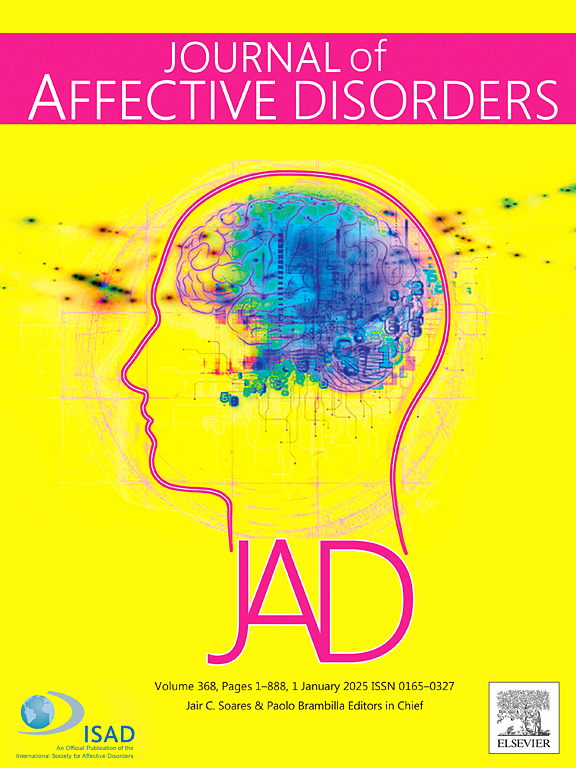Depression vulnerability and gray matter integrity of interoceptive networks in remitted depressed outpatients
IF 4.9
2区 医学
Q1 CLINICAL NEUROLOGY
引用次数: 0
Abstract
Background
Interoception, the representation of internal body states, plays an important role in mental health. While functional neuroimaging links Major Depressive Disorder (MDD) relapse vulnerability to stress-induced inhibition of sensorimotor regions, its association with structural changes in interoceptive networks remains unclear.
Methods
A secondary analysis explored relationships between gray matter volume and relapse vulnerability in remitted MDD patients (N = 85), with two data acquisitions surrounding eight-weeks of prophylactic psychotherapy followed by a two-year follow-up. Participants were randomly assigned to either Cognitive Behavioral Therapy or Mindfulness-Based Cognitive Therapy (MBCT). Mixed-effects models were applied to study the relationships between cortical thickness, time, and intervention type with clinical variables such as relapse status, residual symptoms, and decentering, adjusting for relevant covariates. Analyses were conducted at whole brain levels as well as in pre-defined regions of interest, focusing on sensory regions implicated by prior research.
Results
Relapse was consistently linked to greater cortical thickness in the left superior circular sulcus of the insula and the left anterior occipital sulcus. Residual symptoms correlated with increased cortical thickness in the left insula and right precentral regions, while decentering was linked to reduced thickness in the middle temporal and inferior parietal regions. MBCT participants showed greater cortical thickness increases in the right superior temporal gyrus over time.
Conclusions
MDD vulnerability was unexpectedly linked to greater cortical thickness in sensory and prefrontal brain regions, suggesting that depression vulnerability may reflect maladaptive skill acquisition. MBCT may promote gray matter growth in the right superior temporal region.
Trial registration
ClinicalTrials.gov NCT01178424.

求助全文
约1分钟内获得全文
求助全文
来源期刊

Journal of affective disorders
医学-精神病学
CiteScore
10.90
自引率
6.10%
发文量
1319
审稿时长
9.3 weeks
期刊介绍:
The Journal of Affective Disorders publishes papers concerned with affective disorders in the widest sense: depression, mania, mood spectrum, emotions and personality, anxiety and stress. It is interdisciplinary and aims to bring together different approaches for a diverse readership. Top quality papers will be accepted dealing with any aspect of affective disorders, including neuroimaging, cognitive neurosciences, genetics, molecular biology, experimental and clinical neurosciences, pharmacology, neuroimmunoendocrinology, intervention and treatment trials.
 求助内容:
求助内容: 应助结果提醒方式:
应助结果提醒方式:


